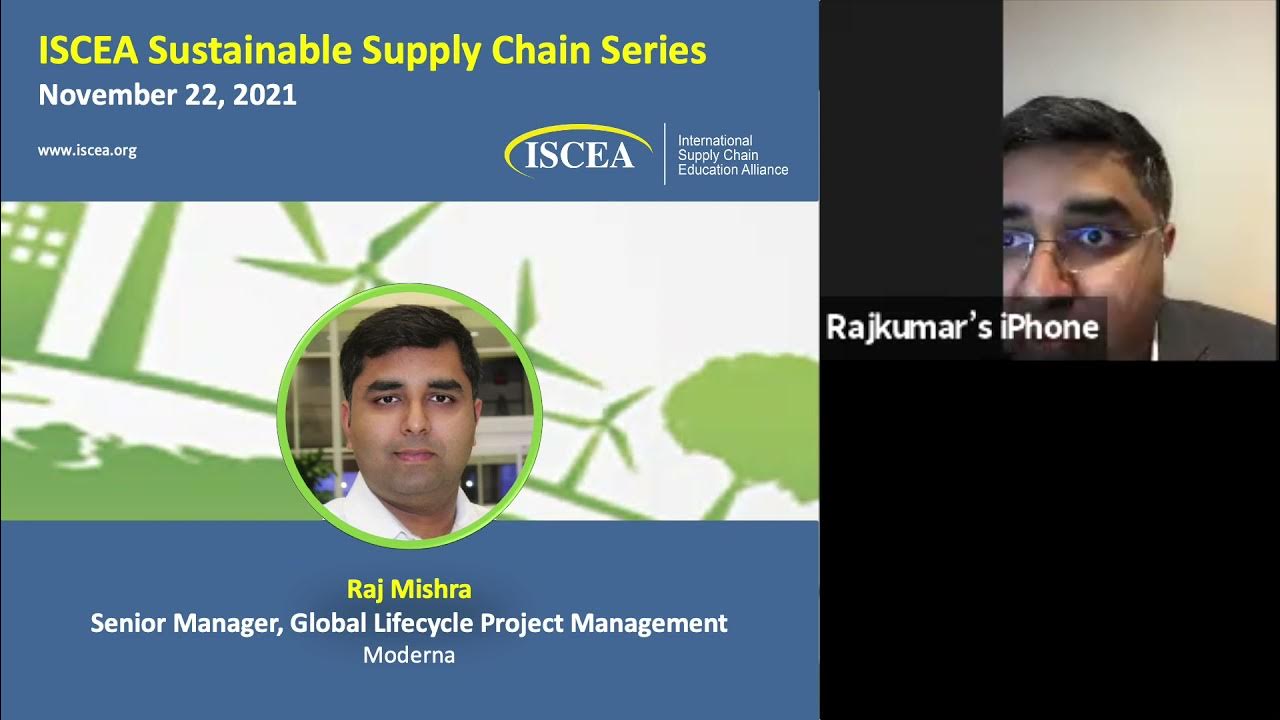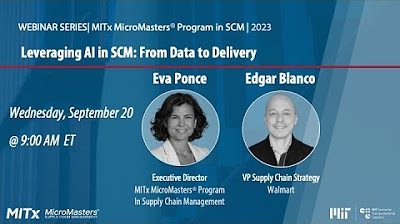Creating customer value using SCM retail technologies and systems
Summary
TLDR在这段对话中,REI的供应链商品和技术副总裁Amit分享了他在信息技术和供应链管理方面超过20年的经验。他讨论了REI如何通过其分销中心和商店网络,以及与供应商的合作,提供全渠道零售体验。Amit强调了技术在提高库存可见性、优化订单履行和增强客户体验方面的作用。他还提到了REI如何通过其会员所有制合作模式,专注于共享价值而非股东价值,以及如何通过循环商务和二手装备销售来推动可持续性。此外,Amit还讨论了REI在疫情期间的应对策略,包括如何快速适应变化,提供路边取货等新服务,并在供应链中断期间保持客户满意度。最后,他分享了自己作为MIT供应链管理MicroMasters项目校友的经历,以及这些课程如何帮助他在职业生涯中取得成功。
Takeaways
- 📚 Callum Betts 和 Laura Lega 是 MITx MicroMasters 供应链管理课程的课程负责人,他们在 MIT 运输物流中心参与全渠道和可持续性相关研究。
- 🏆 Amit Kothary 作为 REI 的供应链、商品采购和合作品牌技术的部门副总裁,拥有超过 20 年的信息技术经验。
- 🛍️ REI 作为会员所有的合作零售商,强调户外生活的重要性,并通过实体店铺、在线商城以及循环商务提供户外装备和体验。
- 🔄 Omnichannel 策略通过提供多种履行选择(如线上购买店内自提、直接发货等)来增强客户体验,但同时也增加了技术、流程和库存管理的复杂性。
- 📈 技术在 REI 的分销网络设计中发挥关键作用,包括新分销中心的选址和网络流量的模拟,以满足业务增长和客户需求。
- 🌐 疫情期间,REI 利用其 Omnichannel 能力快速适应,如通过在线零售和推出路边取货服务来应对门店关闭的挑战。
- 🔧 技术系统的选择是 REI 持续考虑的问题,包括使用集成的 ERP 系统或最佳实践解决方案的组合,以满足不同的业务需求。
- ♻️ 可持续性是 REI 的关键议题,通过循环商务模式(如二手装备销售)来减少碳排放,目标是到 2030 年减少 55% 的碳排放。
- 📈 REI 利用数据分析来优化库存、顾客承诺和总成本服务,同时最大化客户体验。
- 📊 通过 MicroMasters 项目,Amit 扩展了供应链知识,建立了专业网络,并将其应用于工作中,特别是在 Omnichannel 优化解决方案的共同创造和创新上。
- 📨 顾客退货体验是 Omnichannel 策略的重要组成部分,REI 通过技术简化了退货流程,提高了客户满意度。
Q & A
如何理解REI的全渠道体验对顾客价值的影响?
-REI的全渠道体验通过提供多样化的购买和履行选项,如在线购买、店内自提、家庭送货等,增强了顾客价值。这种策略不仅满足了顾客对灵活性和便捷性的需求,而且通过无缝的购物体验,增强了顾客对品牌的忠诚度。
REI在技术系统方面如何应对全渠道策略带来的挑战?
-REI通过集成ERP、仓库管理、订单管理系统、销售点系统等技术系统,确保了对库存的实时可见性,以及对订单履行的优化。这些系统共同工作,支持REI在全渠道环境下提供一致的顾客体验。
REI如何利用技术来优化其分销网络设计?
-REI使用网络设计和建模软件,结合客户数据、产品流、存储需求和可持续性目标,来评估和决定新的分销中心的位置和设计。技术帮助REI在满足增长需求和顾客期望的同时,优化了成本和服务水平。
在新冠疫情期间,REI如何调整其供应链流程?
-面对新冠疫情带来的挑战,REI迅速调整了其供应链流程,包括临时关闭实体店、增加线上订单处理能力、推出路边取货服务,并在供应链中断时通过“通知我何时有货”功能来管理顾客期望。
REI如何量化和跟踪其可持续性目标的进展?
-REI通过收集和分析来自不同数据源的信息,包括能源使用、废物管理、产品制造和分销过程等,来量化和跟踪其可持续性目标。此外,REI也在探索合作伙伴关系和技术解决方案,以提高数据收集和报告的准确性。
REI在选择供应链系统时是如何权衡ERP系统和最佳实践解决方案的?
-REI在选择供应链系统时会考虑ERP系统的集成优势和最佳实践解决方案的专业性。对于标准化和非差异化流程,REI可能会倾向于使用ERP系统以简化集成。而在需要差异化和客户接触点更近的领域,REI可能会选择最佳实践解决方案来提供更专业的服务。
REI是如何处理drop ship(直发货)模式下的库存和订单履行的?
-REI通过与drop ship合作伙伴建立合作关系,扩展了产品种类并满足了客户需求。在处理库存和订单履行时,REI面临的挑战包括获取合作伙伴的实时库存信息、协调不同的服务水平以及管理退货流程。REI需要与合作伙伴进行紧密的技术集成,以确保顾客体验的一致性。
REI如何通过技术提高供应链的透明度和效率?
-REI通过实施先进的供应链管理系统,如ERP和WMS,以及利用云技术、API和微服务等现代技术,提高了供应链的透明度和效率。这些技术的应用使得REI能够实时监控库存、优化订单履行,并快速响应市场变化。
REI如何确保其供应链的可持续性?
-REI致力于通过多种措施确保供应链的可持续性,包括使用可再生能源、实现零废物目标、减少包装,并在其分销中心实现LEED认证。此外,REI还在探索如何减少上游供应链的碳足迹,比如通过使用清洁能源和提高制造过程的能效。
REI在疫情期间推出的路边取货服务是否会继续提供?
-REI很可能会继续保持路边取货服务,因为这种服务为顾客提供了便利性,并且已经逐渐成为顾客的期望和习惯。尽管疫情限制放宽后,顾客可能更倾向于亲自到店购物,但路边取货作为一种增值服务,仍能满足顾客对便捷性的需求。
REI如何衡量其供应链技术创新对业务的影响?
-REI通过评估技术创新对顾客体验、订单履行效率、库存管理、成本节约等方面的影响来衡量其供应链技术创新的业务价值。此外,REI还会考虑技术如何帮助公司实现其可持续性目标,并在长期内提高竞争力。
Outlines

This section is available to paid users only. Please upgrade to access this part.
Upgrade NowMindmap

This section is available to paid users only. Please upgrade to access this part.
Upgrade NowKeywords

This section is available to paid users only. Please upgrade to access this part.
Upgrade NowHighlights

This section is available to paid users only. Please upgrade to access this part.
Upgrade NowTranscripts

This section is available to paid users only. Please upgrade to access this part.
Upgrade NowBrowse More Related Video

How Secure IoT is Transforming Supply Chains

The Paradox of Digital - people, processes, and technology in SCM

Sustainability in Pharmaceutical Industry - Moderna

Leveraging AI in Supply Chain Management: From Data to Delivery

From Traditional to Digital Supply Chain Networks - AWS

Supply Chain Management Trends for 2024 and Beyond
5.0 / 5 (0 votes)
